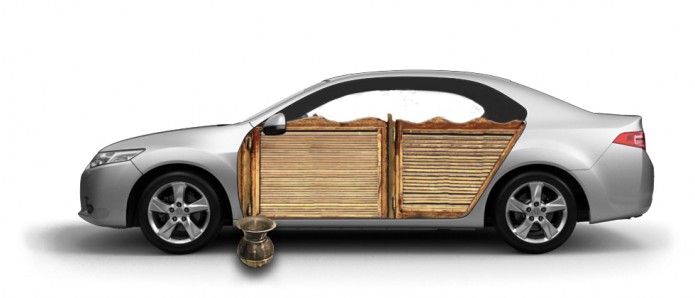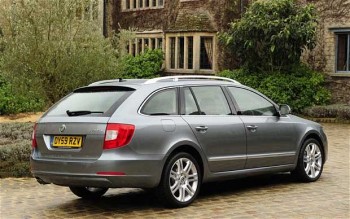There are a lot of things to figure out. This entry shan’t be an exhaustive listing; that’d be too long and tedious, and it’s been done really well elsewhere. When I’m done, I think I’ll post a link list of really helpful resources. As I go along, though, I want to highlight some of those things that work differently, either minorly or majorly, either for the vague interest of the readers I know I have, or potentially to help out other immigrants finding these pages later on, similarly flummoxed by the whole system.
I started out by asking friends who have cars. I got unclear answers that disagreed with each other. The answers did tell me that the prices were extremely variable, and servicing day could be quite a source of stress – the amount it would cost could be quite an unknown. The guides I’ve been reading are telling me how many miles or months to do servicing for each vehicle make and model (it’s different from car to car). The service history is some sort of bound log book that should have stamps and signatures from the mechanic shop saying that the “service” has been done, whatever it is. I got a quote on a warranty to see what sorts of things it would and wouldn’t cover, and saw that maintaining this “full service history” was a condition of the warranty. I asked and asked and asked around, though, and got vague answers that didn’t agree with each other. I was very frustrated.
Not only have I driven many hundreds of thousands of miles in my 17 years of driving, but I’ve done a fair bit of work under the hood, too. When I was a college (university) student, I had a Pontiac Grand Am – I swear it was the worst car ever made, mechanically – and my choices were to learn how to fix it or to do without a car, basically. The latter’s not really an option in middle America, which I know is not something most Englishpeople can wrap their heads around, but it’s true. So, I got the shop manual and read it, and learned to fix some things. Dad helped me with some – the serpentine belt is definitely a two-person job. I’ve changed oil, replaced belts, fans, thermostats, fuel filters, spark plugs, brakes, put tires onto wheels, changed innumerable tires, and various other odds and ends. Simple stuff: I’m no mechanic, and I don’t pretend to know the complicated stuff, but I can read the directions for how to replace a thing – it’s the same, really, as following a recipe or reading a mathematical proof. If I have the tools, I can usually give it a go. I don’t always choose to, but I know I am perfectly capable of doing a great number of things on cars.
Combine that background with the general background I grew up with: the closest I’ve ever come to anything so vague as “servicing” is “tuneup”, but I finally got an actual definition for that when I was around 18: it apparently means replacing the air filter, spark plugs, and wires. I’ve been told that same definition by many different people and companies over the years now, so it seems to be fairly universally accepted. Else, in the US that I grew up in, we took our cars “to get the brakes replaced” (or done) or to “get the oil changed” or “to get the tires replaced”, etc – we actually say what we’re having done. I’ve never been aware of anything so universal and vague and useless as this “servicing” malarky that doesn’t give any clue at all about what’s being done. Some people have told me they have it done every three months; the books I’m looking at only call for it to be done every 12-24 months for most cars. What could it be that they’re actually doing?!
I’ve already thrown up my hands in frustration about the lack of car loving here – at least in my current social circles. There’s this widespread misconception that, while owners used to be able to work on their own cars, they absolutely can’t now because computers control so much, so now everyone must take their cars to mechanics for everything. Computers do have a lot to do with cars that shadetree mechanics can’t do much about – but a lot of the simple stuff doesn’t deal with that at all. Besides, the way to deal with computer errors is to get a computer code reader that you plug in to the car, so you can see what errors you’re getting, and then you can address them. I know cars have changed since mine was built, but I can’t imagine it’s as difficult as people make out.
Anyway, I did manage to learn that a full service history is something that I should definitely get when buying a car. It would be some sort of bound booklet, and it would have stamps and signatures from the mechanic shops that had done work of some sort – I was still not sure whether it was preventive or curative (as in, oil changes type work or fixing something gone wrong type work) – on the car. If the car didn’t have a full service history, I should eye it very skeptically and give it a wide berth. However, the service booklet probably wouldn’t tell me what was done to the car – it’s just that the mechanic wouldn’t have signed off on it if the right stuff hadn’t been done.
I stayed confused and frustrated for a long time – surely people aren’t just blindly giving their money to mechanics? Surely they have some clue of what they’re paying money for, right?
Reading the guides I’d found, and putting it together with what I’d been told about servicing by my car-owning friends, I finally concluded that this must be something like the schedule I’d seen in every car owner’s manual I’ve had, with things like oil change every X miles, belt changes every Y miles, fluid flushes every Z miles, and so forth, lining up different preventive maintenance things to be done every so many thousand miles or months. That would help to explain why this guide I have shows a different schedule for every different car, and why the answers were so fuzzy and different from each car owner.
Eventually, I had a chance to go by a couple of local mechanic shops and ask. I’d thought to do this, both to try to get the answer, and to feel out local mechanic shops – because all cars need fixing sooner or later, so I’ll need a mechanic, so it’d be good to go have a chat and start to get a feel for these places.
The first one I went to, I got an answer a lot like my friends’ answers, leaving me not much clearer – though he was at least able to give me some pricing information, and to answer another question I had clearly.
The second one I went to was brilliant, though. Once I explained what I was after, the confusion cleared from his face, and he showed me the blank form on his clipboard and said he was just about to do a servicing right now – and showed me the three-page checklist. Brilliant! I don’t remember everything that was on that list, but a lot of it was the sort of things that get checked at a full service oil change in the US (one of those with the 49-point inspection type things). They’re looking at the condition of the belts, tires, fluids, wipers, and so on.
He showed me the bound booklet, but all I could gather was that it came from the manufacturer – it had no stamps yet because it was a brand new car, just in for its first servicing (well, 11-month-old car) – so he didn’t flip it open. So when I do buy a car, I’ll get that and see more.
We talked at length, and I came home that day and started this entry, and then left it far too long. But I came to realize that it’s an inspection ((not to be confused with the MOT, which is what most Brits seem to think of when you mention “inspection” and “car” in the same sentence. I’ll talk about the MOT another time, but just bear in mind that this is something completely different.)): nearly all those entries on that checklist started with “Check condition of…” Once this dawned on me, I realized that I had my answer to a question that had plagued Chris and I: to get servicing or not to get servicing?
See, I generally buy a car and keep it til it won’t go anymore – my first car was totalled by an accident, and my second car’s motor gave out (that was the Grand Am; by then I was Done with it – So Very Done). My third car will cost far too much to import, and then the steering wheel’s on the wrong side, so I’m not dealing with that; she’ll stay in the US to be driven when we’re there until she won’t go anymore. This time, though, I was pondering, do we get a car that’s “good enough for now” in the hopes of selling it on in a few years, and getting a nicer one, or do we follow this same pattern, and get a car that we’re quite happy to keep til it won’t go anymore (or, most likely, costs too much to get to pass its MOT)? If the former, then we need to be sure to keep up the service history stamps. If the latter, then we can do what we please – do our own work, or whatever.
Once I realized it’s mostly just a checklist – an inspection – then I realized that Chris and I could check our car over ourselves, at least most of the checklist, and know before servicing whether any work would need doing, and thus alleviate the fear of the unknown bill part. Heck, if any of the simpler things needed doing, we could even do those ourselves before taking it in, and save the labor and the marked-up parts costs. Then we could still get the precious stamps, but with less extra costs on top.
Since I’ve started this entry, I’ve even found one of those checklists online, here. Looking at that list closely (well, I’m sure that’s a different list; it’s a different shop), and seeing the prices, I’m astonished at the highway robbery of it. I think Chris and I will be coming down on the side of “keep until it fails the MOT” – it seems cars are lucky to make it to age 10 or 12 here – and just doing it ourselves with no precious stamps. We could spend a day doing all the things on that list, without any specialist tools at all, and pay ourselves over £200, with no chance of scamming ourselves!
So: What is car servicing? It’s looking everything over and making sure everything works right (lights, etc); making sure nothing’s nearly worn out (belts, brakes, etc); replacing things on schedule according to the manufacturer (oil, fluids, spark plugs, air filter); replacing things that are worn out (wiper blades, etc). That’s all. “What’s included in a car servicing?” got me results from Google, if you want some more sample lists.















